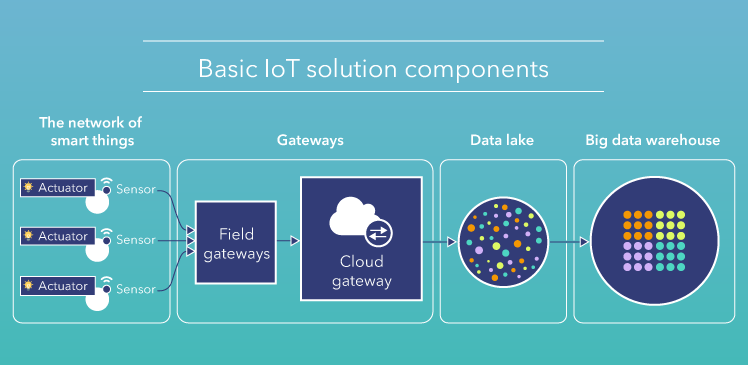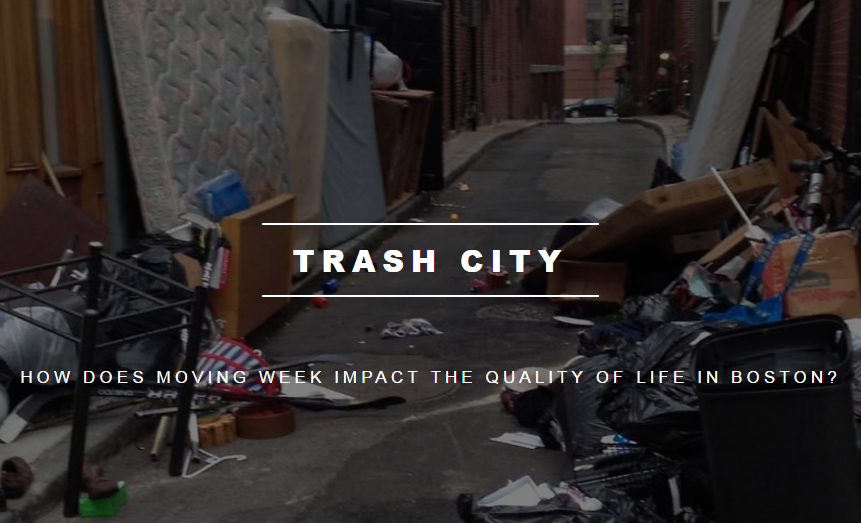Imagine a city that monitors its own health, identifies potential fail points using AI algorithms, and autonomously takes action to prevent future disasters.
This is the smart-city of the future. In our first installment of our blog series on Smart Cities, we ran through an overview of how Smart Cities will change our world. In this second entry of our blog on smart cities, we’ll examine perhaps the biggest building block necessary to create a smart city: smart infrastructure.
The construction of a smart city begins with developing a vast, city-wide IoT system, embedding sensors and actuators into the infrastructure of the city to create a network of smart things. The sensors and actuators collect data and send it to field gateways which preprocess and filter data before transmitting it through a cloud gateway to a Data Lake. The Data Lake stores a vast amount of data in its raw state. Gradually, data is extracted for meaningful insights and sent to the Big Data warehouse where it’s structured. From here, monitoring and basic analytics will occur to determine potential fail points and preventative measures.
Check out the breakdown below:
As you can see, it all begins with the construction of smart infrastructure that can collect data. Here are some of the big applications in the smart infrastructure space:
STRUCTURAL HEALTH
One of the major applications of smart infrastructure will be monitoring key data points in major structures, such as the vibrations and material conditions of buildings, bridges, historical monuments, roads, etc.
Cultivating data will initiate basic analysis and preventative measures, but as we gather more and more data, AI and machine learning algorithms will learn from vast statistical analysis and be able to analyze historical sensor data to identify trends and create predictive models to prevent future disasters from happening with unprecedented accuracy.
Learn more about how Acellant is building the future of structure health monitoring.
ENVIRONMENTAL APPLICATIONS
There are a multitude of potentially environmental applications for smart infrastructure designed to optimize city activities for environmental health. For example, embedding street lights with intelligent and weather adaptive lighting will reduce the amount of energy necessary to keep roads alight.
Air pollution monitoring will help control CO2 emissions of factories and monitor the pollution emitted by cars. Ultimately, earthquake early detection can help monitor distributed control in specific places of tremors.
WASTE MANAGEMENT
Boston is well-known as one of the top college cities in the United States. Every fall, over 160,000 college students from MIT, Harvard, Northeastern, BU, BC, Berklee School of Music, and more move in to their new living spaces, causing undue stress on the city’s waste management administration. ANALYZE BOSTON, the city’s open data portal, provided key data points such as housing rentals, trash volume and pick-up frequency, enabling a project called TRASH CITY to reroute waste management routes during this trying time.
CONCLUSION
Projects like Trash City show the many ways in which we can optimize city operations by analyzing data effectively. As smart infrastructure enables the collection of more and more data, projects like TRASH CITY will become more efficient and more effective.
Of course, the biggest application of Smart Infrastructure will be the many ways in which it will change how you get from A to B. Next week, we’ll focus in on smart transportation and how it will reshape metropolitan transportation.



